
Key Points
- Insurance on the Verge of a Relative Trend Change?
- Financials Improve on an Absolute & Relative Basis
- Utilities Trade to the Top of the Range
- Real Estate Stalling in its Relative Trend
- Communication Services Holds Support at the Breakout Level
Chart in Focus
Below, we highlight recent strength in the Financial sector. While many equate the Financials with Banks, Insurance is also a part of the group. The S&P 500 Insurance Index is on our radar as the industry gaps above near-term resistance after retaking the 50-day moving average. Above the 505 level, there is scope for the index to trade back to the May highs.
On a relative basis, Insurance is testing the 50-day moving average from below. A break of the moving average and resistance would be a signal that Insurance is taking a leadership role.
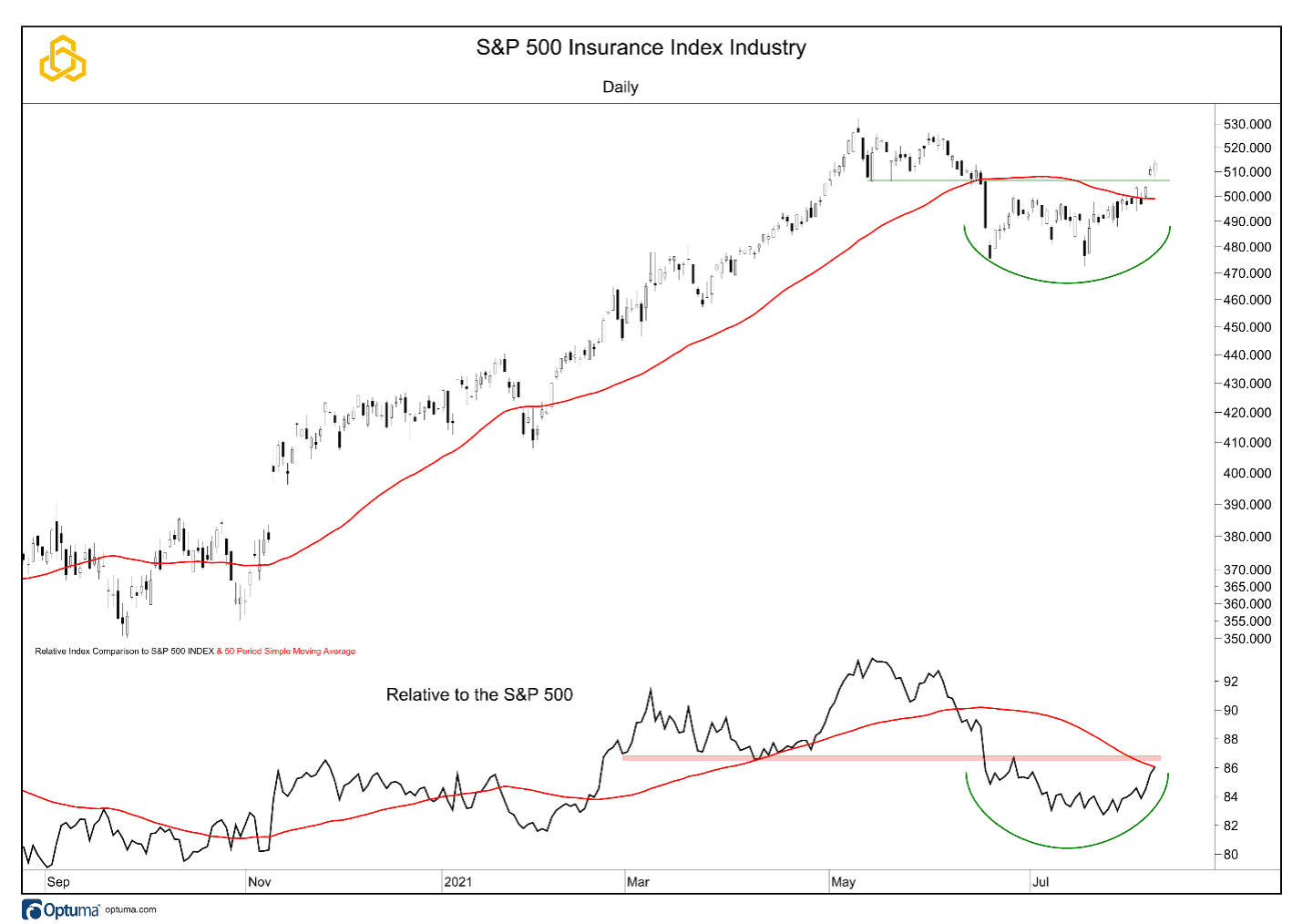
Visiting the Sector Relatives
All the charts below look at the sectors of the S&P 500 on an absolute basis (top panel) and relative to the S&P 500 (bottom panel) to get a sense of the leaders, laggards, and shifts in trends. We include the 50-day moving average on each.
Information Technology
The Technology sector remains in a steady uptrend on an absolute basis, near record levels. Near-term support moves up to the 2,600 level, in line with the rising 50-day moving average.
Relative to the S&P 500
On a relative basis, the ratio is in a bit of a stalling pattern above short-term resistance and the rising 50-day moving average. A break of the early 2021 highs opens the door to an attack of the high reached in September of last year.
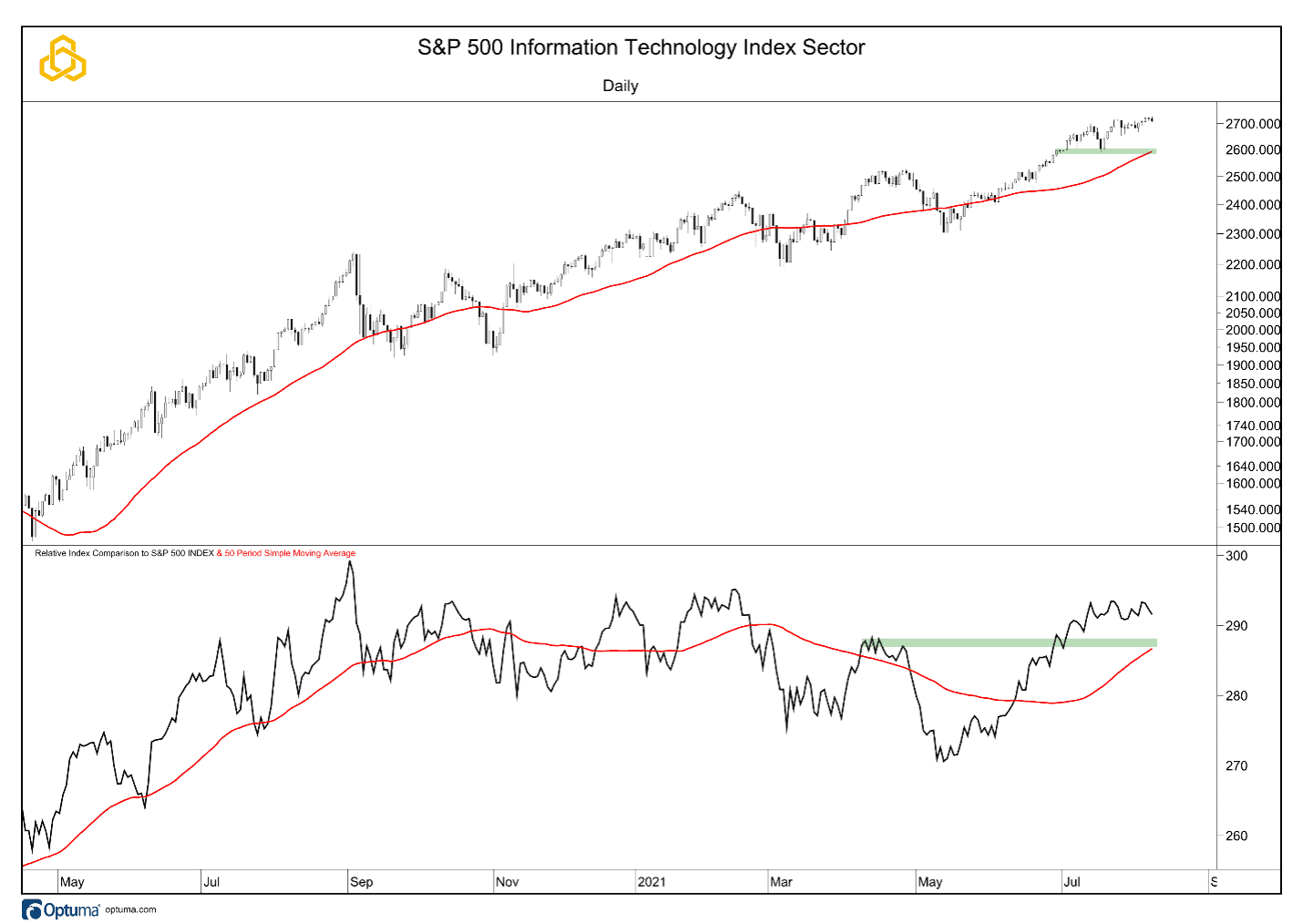
Consumer Discretionary
The Consumer Discretionary sector continues to test price-based support, just above the 50-day moving average, and remains in a consolidation that has been in place since April.
Relative to the S&P 500
On a relative basis, Discretionary is below the declining 50-day moving average to remain in a downtrend. Remaining above the June low could be the start of a base-building process.
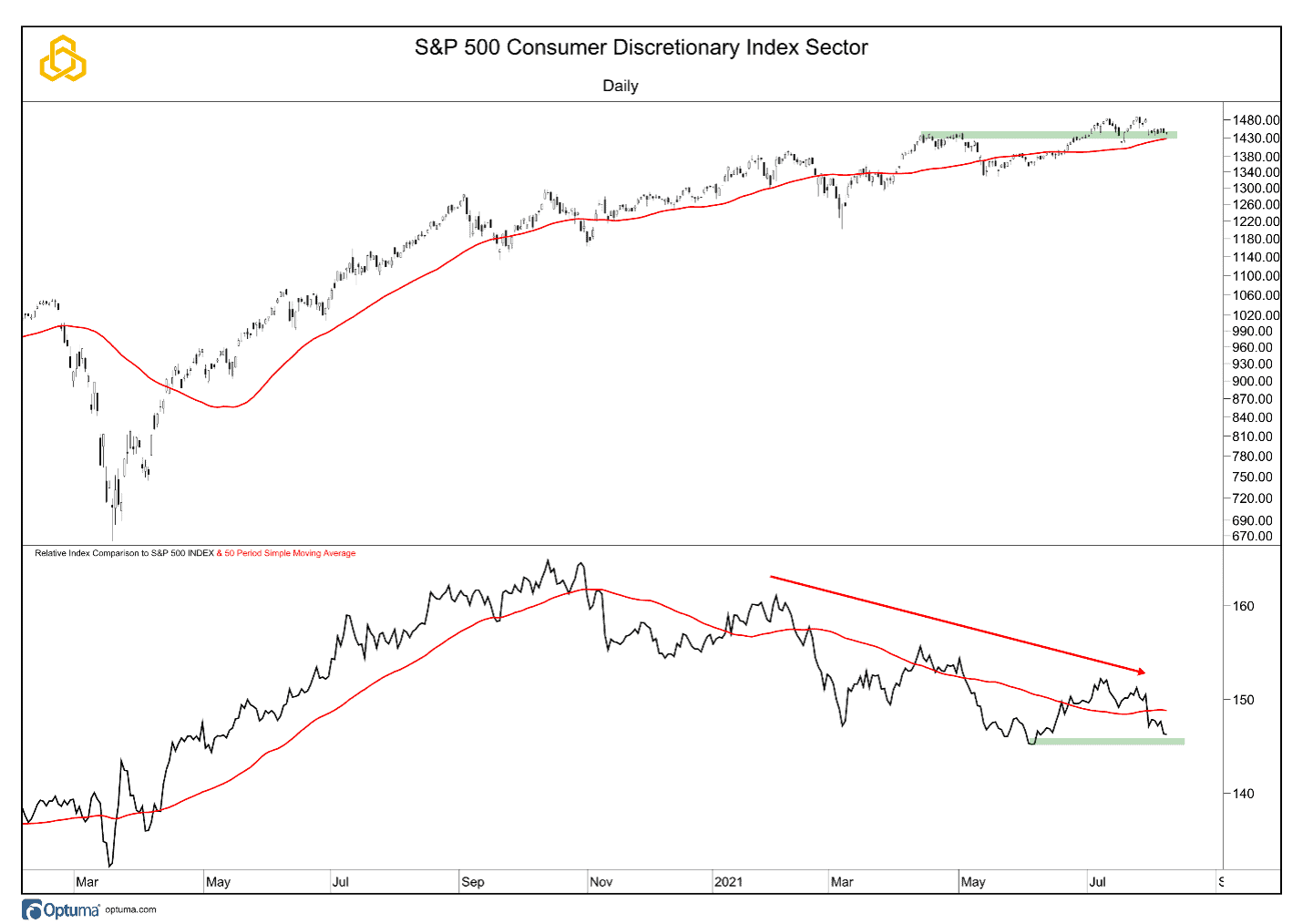
Communication Services
The Communication Services sector is trading near record highs, above the steadily rising 50-day moving average. The group has support in the 255 – 260 zone. Above that level, the odds favor a continuation of the bullish trend.
Relative to the S&P 500
The relative ratio remains above support at the breakout level and the 50-day moving average after a successful test last week. Holding this support zone keeps the trend in favor of outperformance.
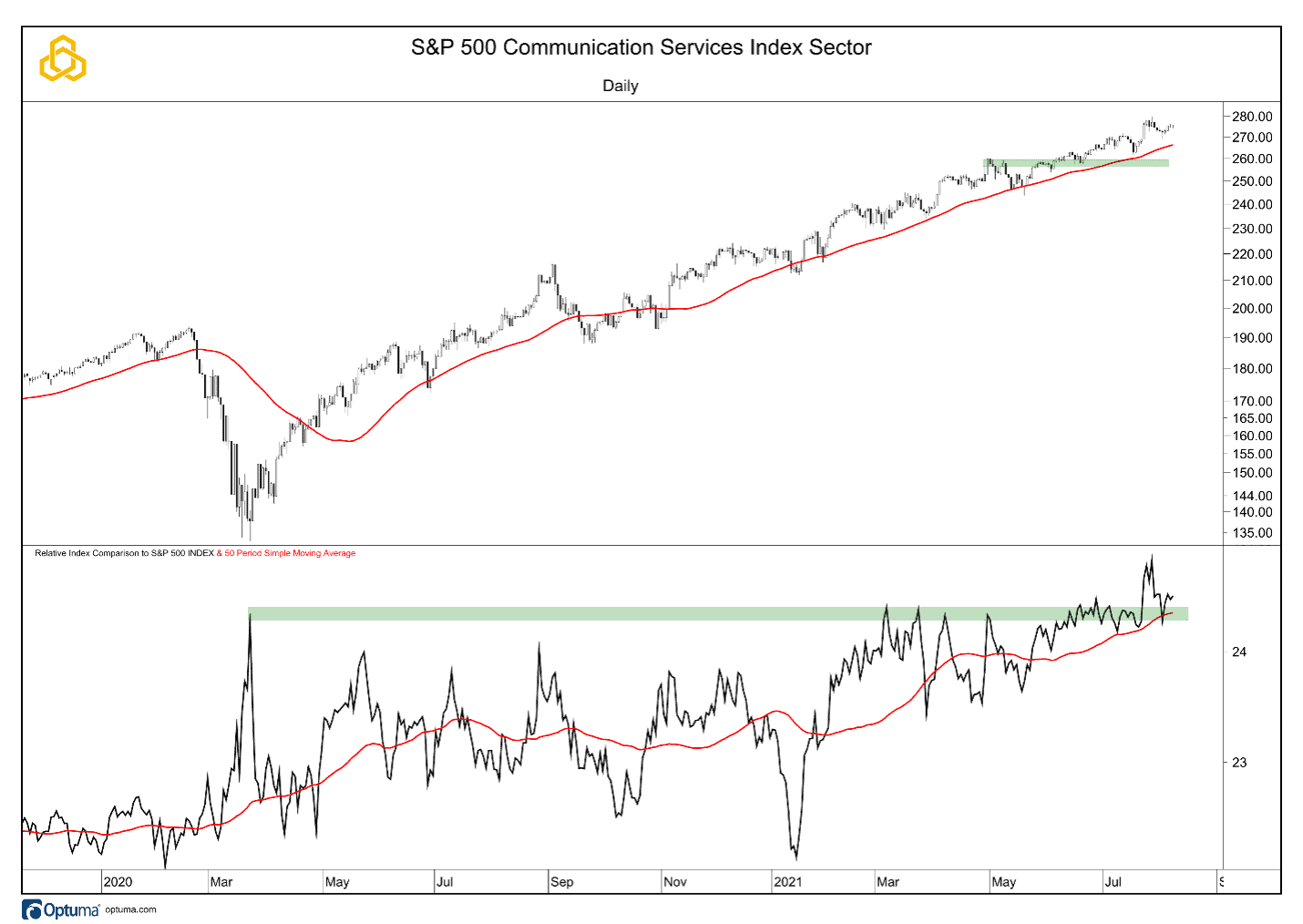
Materials
Materials have pushed slightly above the 50-day moving average after holding support in July. The near-term trend remains a choppy consolidation, after the strong rally from March 2020 until May of this year. Price-based support, near the 500 level, is the key to keeping the structure of the long-term uptrend in place.
Relative to the S&P 500
On a relative basis, the group remains below the declining 50-day moving average. The ratio continues to hold the relative support level that we have been highlighting but we want to see a move above the moving average to have confidence that a new trend of outperformance is taking hold.
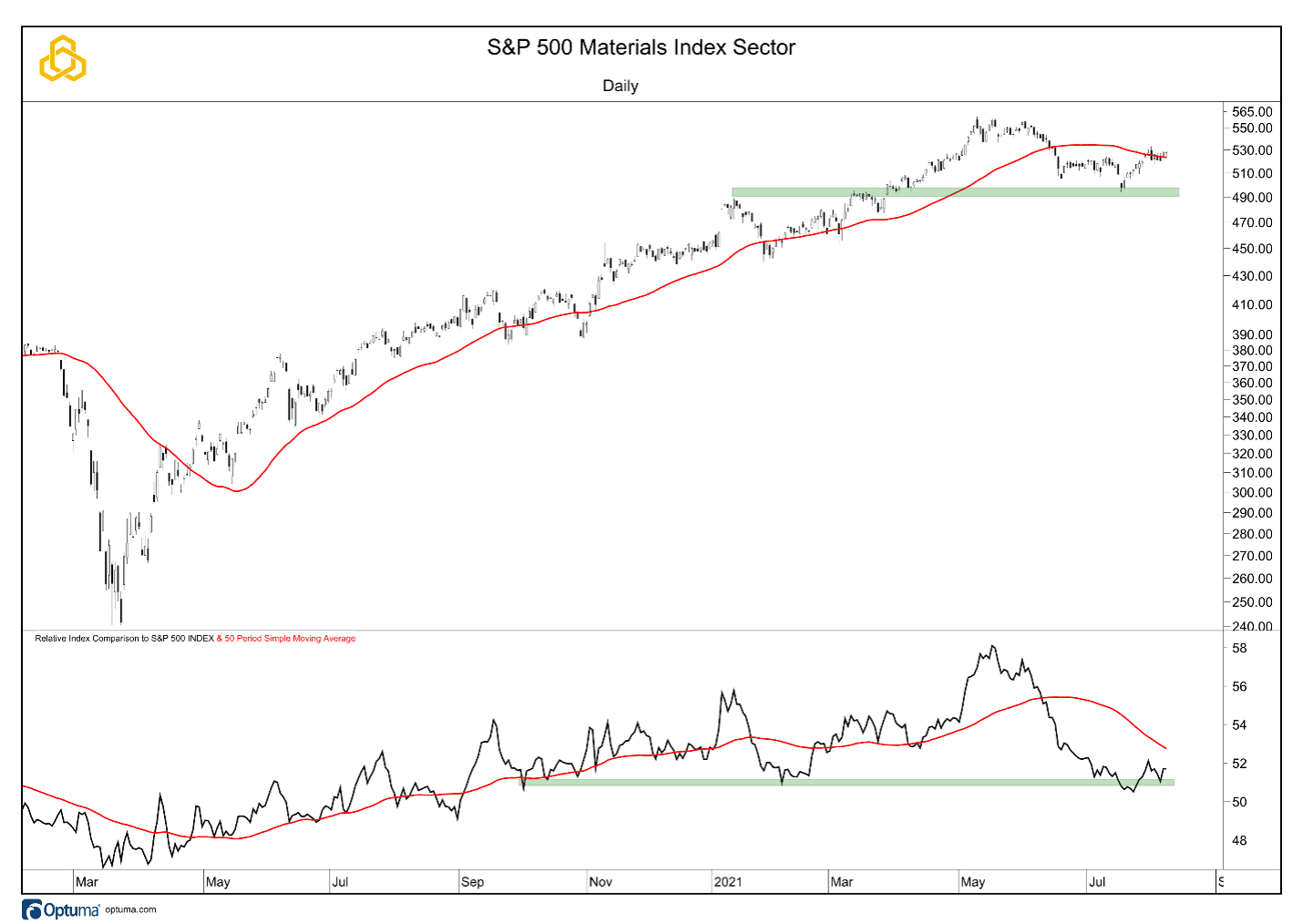
Financials
The Financials remain in the consolidation that has been in place since June but have retaken the 50-day moving average after a strong move over the past two days of trading. The door is now open for a move back to the June highs, a break of which would signal that the uptrend from the March 2020 lows is resuming.
Relative to the S&P 500
On a relative basis, the group has retaken the 50-day moving average and broken support. While the ratio is not “out of the woods”, this is a development that we are watching closely for a possible resumption of leadership.
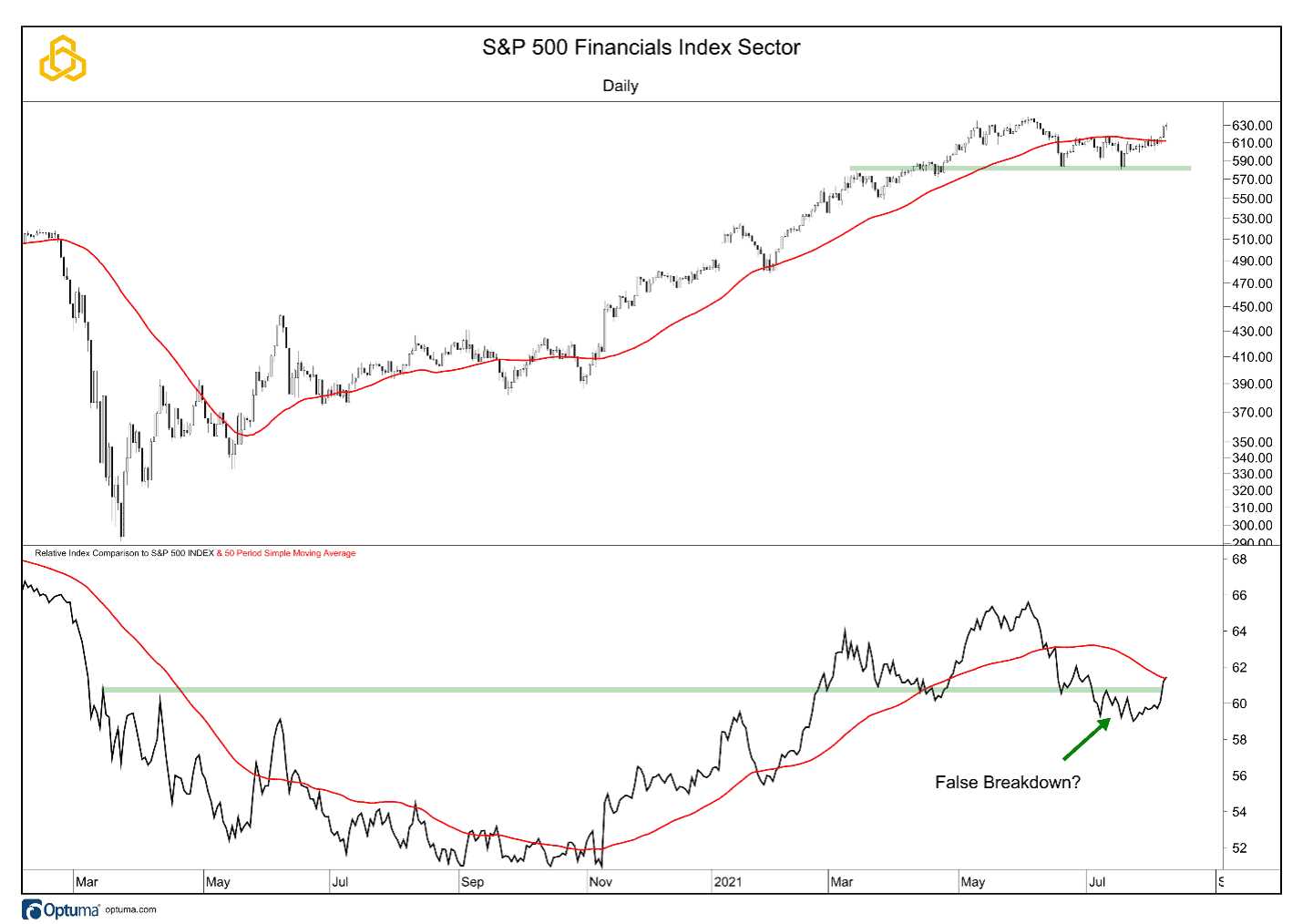
Industrials
The Industrials sector remains in a consolidation, dancing with a flat 50-day moving average, just above price-based support.
Relative to the S&P 500
On a relative basis, the group continues to move to the downside, trading below a declining 50-day moving average. The next support level is around the January lows.
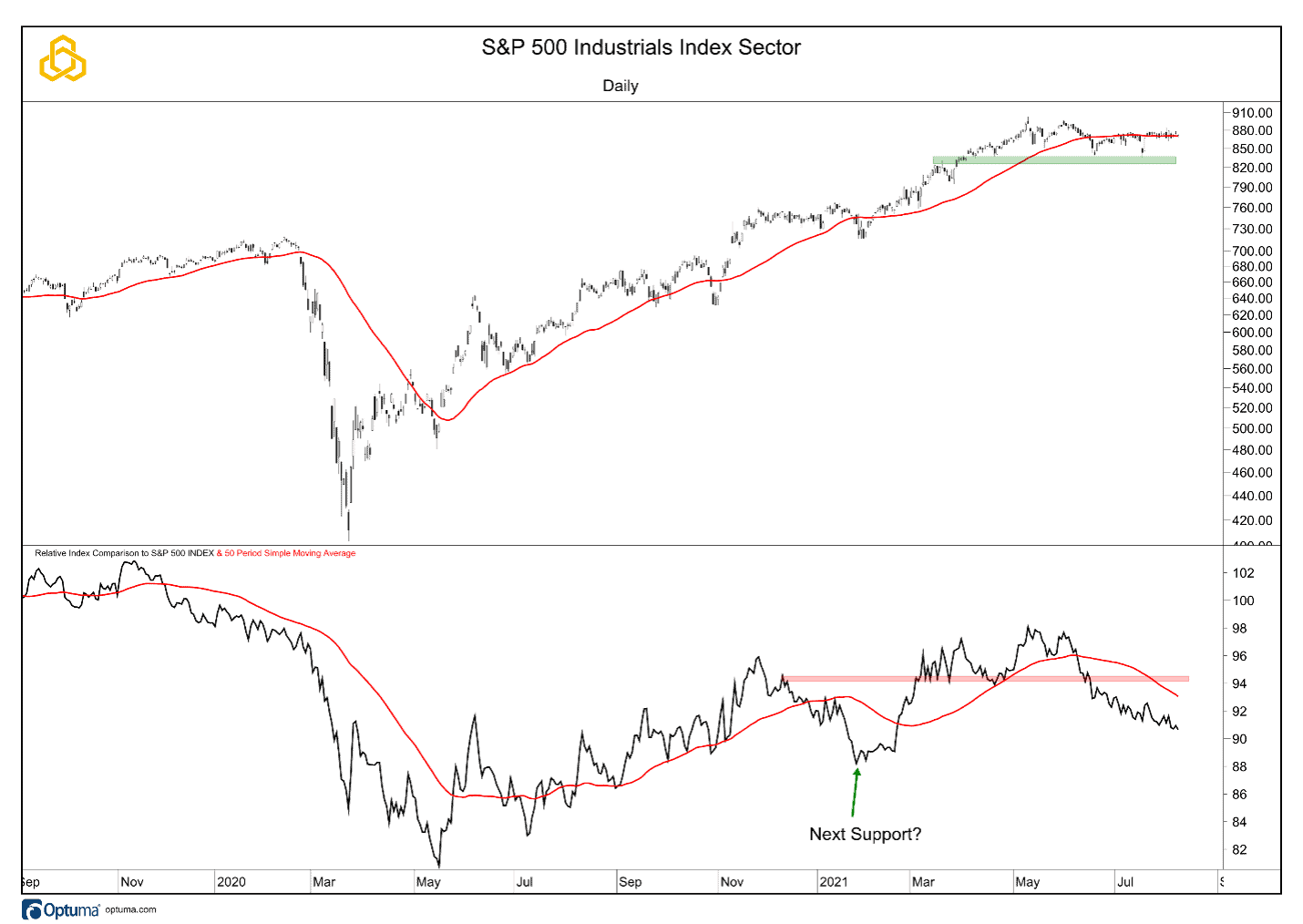
Energy
The Energy sector continues to trade in a well-defined range. Former support, at the 2019 lows, is current resistance. Support is at the peak from the initial rally from the March 2020 low. The 50-day moving average continues to move lower.
Relative to the S&P 500
On a relative basis, the ratio remains below the declining 50-day moving average and has moved further from price-based resistance.
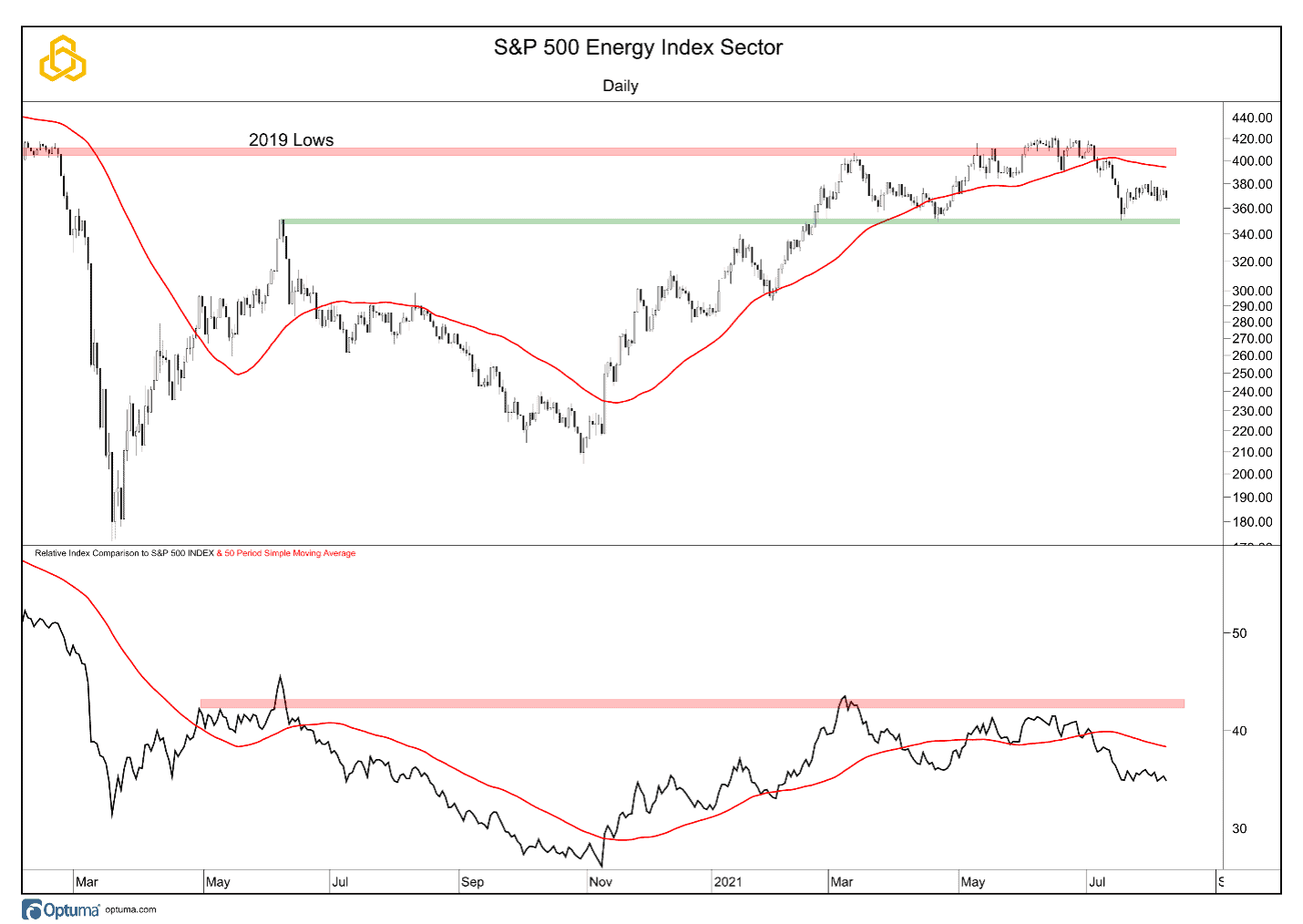
Consumer Staples
The Consumer Staples sector is above price-based support and the rising 50-day moving average, trading just below record levels on an absolute basis.
Relative to the S&P 500
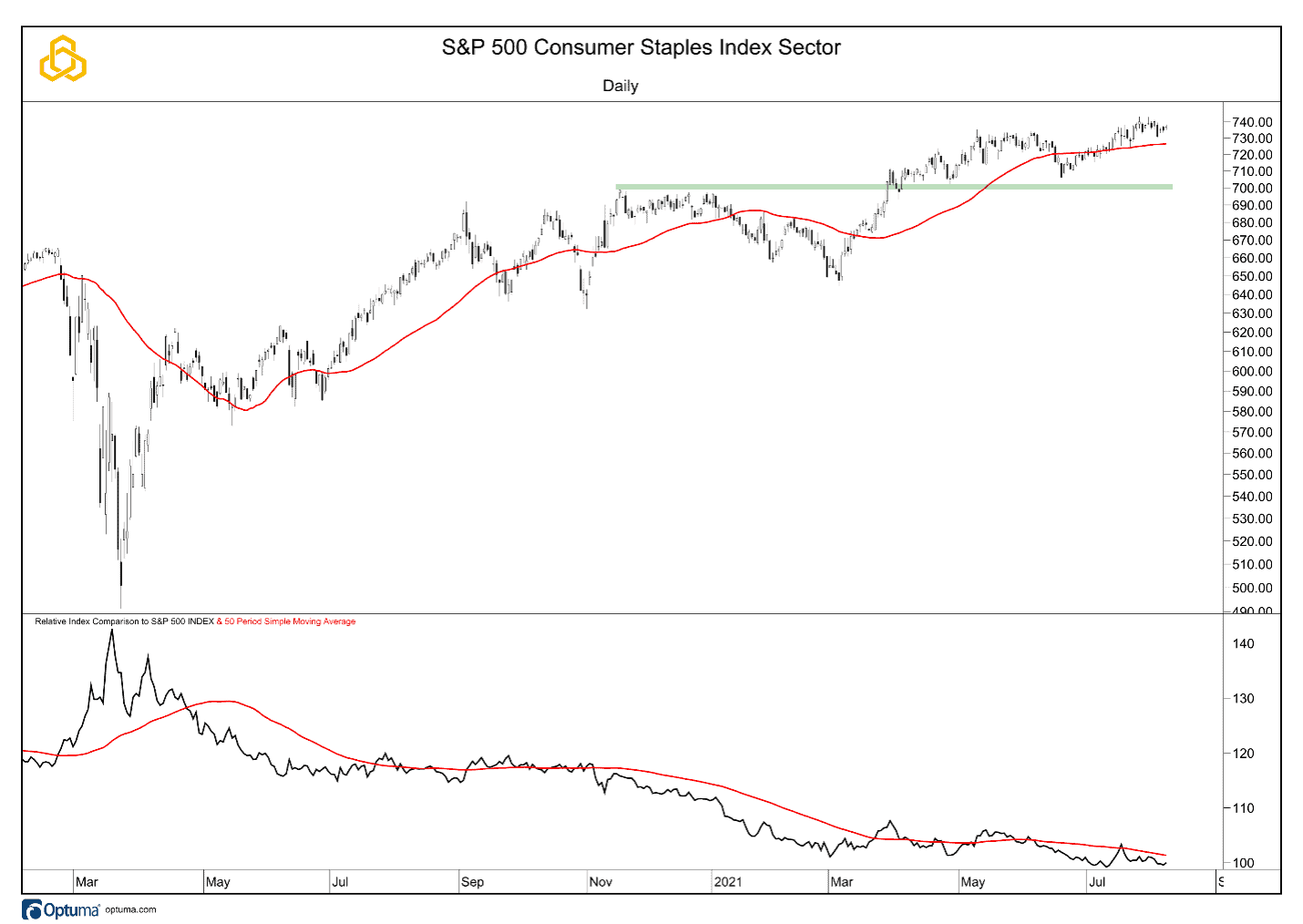
Real Estate
Real Estate traded to a record high last week and remains above support at the 285 level, which lines up with the rising 50-day moving average.
Relative to the S&P 500
On a relative basis, the group is testing the rising 50-day moving average as it trades between support and resistance. For now, it appears that the uptrend from the early-2021 lows has stalled.
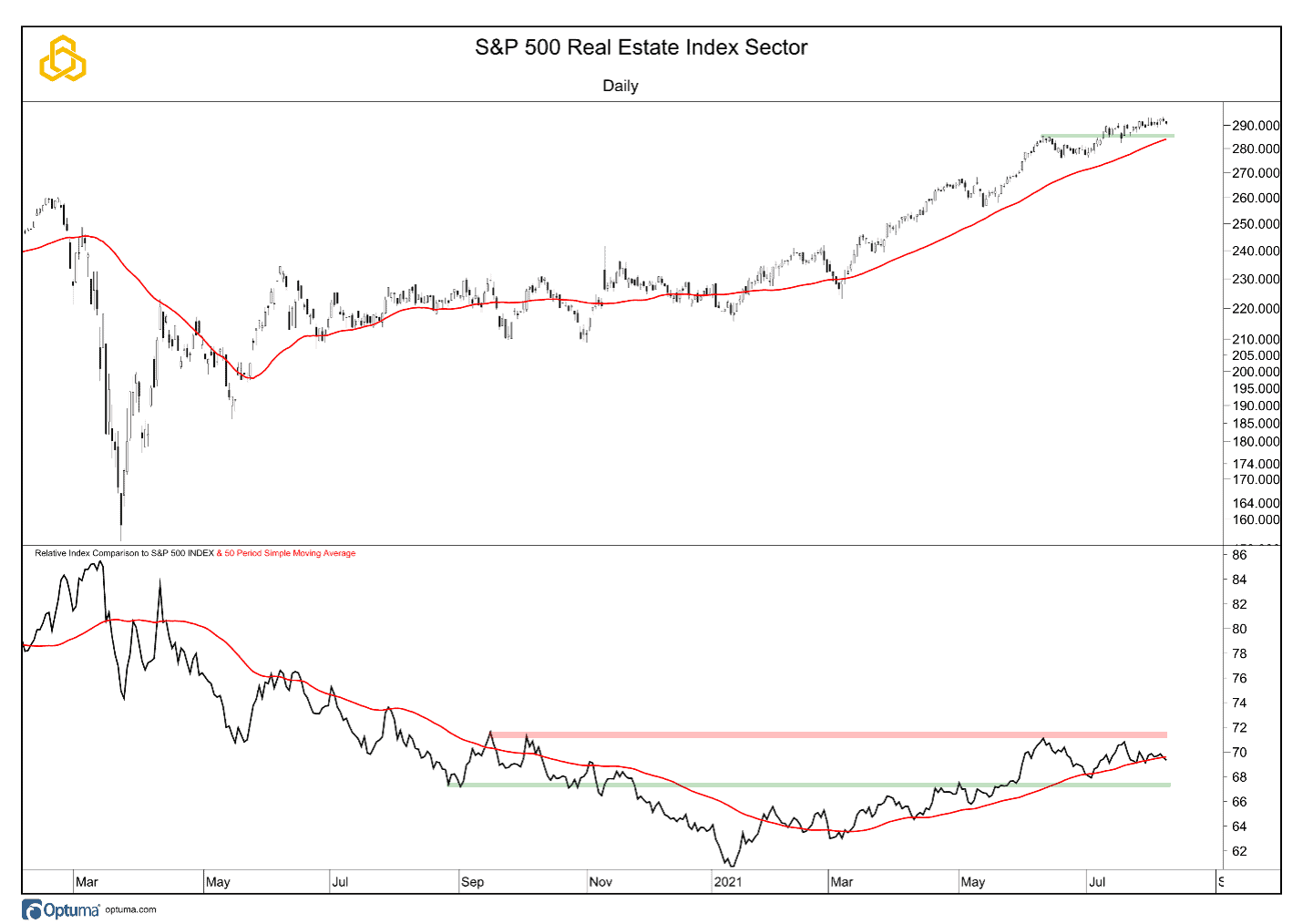
Utilities
The Utilities sector is holding above the 50-day moving average between support near the 320 level (which we move higher this week) and resistance at 345. The Utes are threatening a breakout that would set the stage for a run to the March 2020 highs.
Relative to the S&P 500
The relative trend is showing some signs of stabilization as it has made a slightly higher low and is pushing above the 50-day moving average.
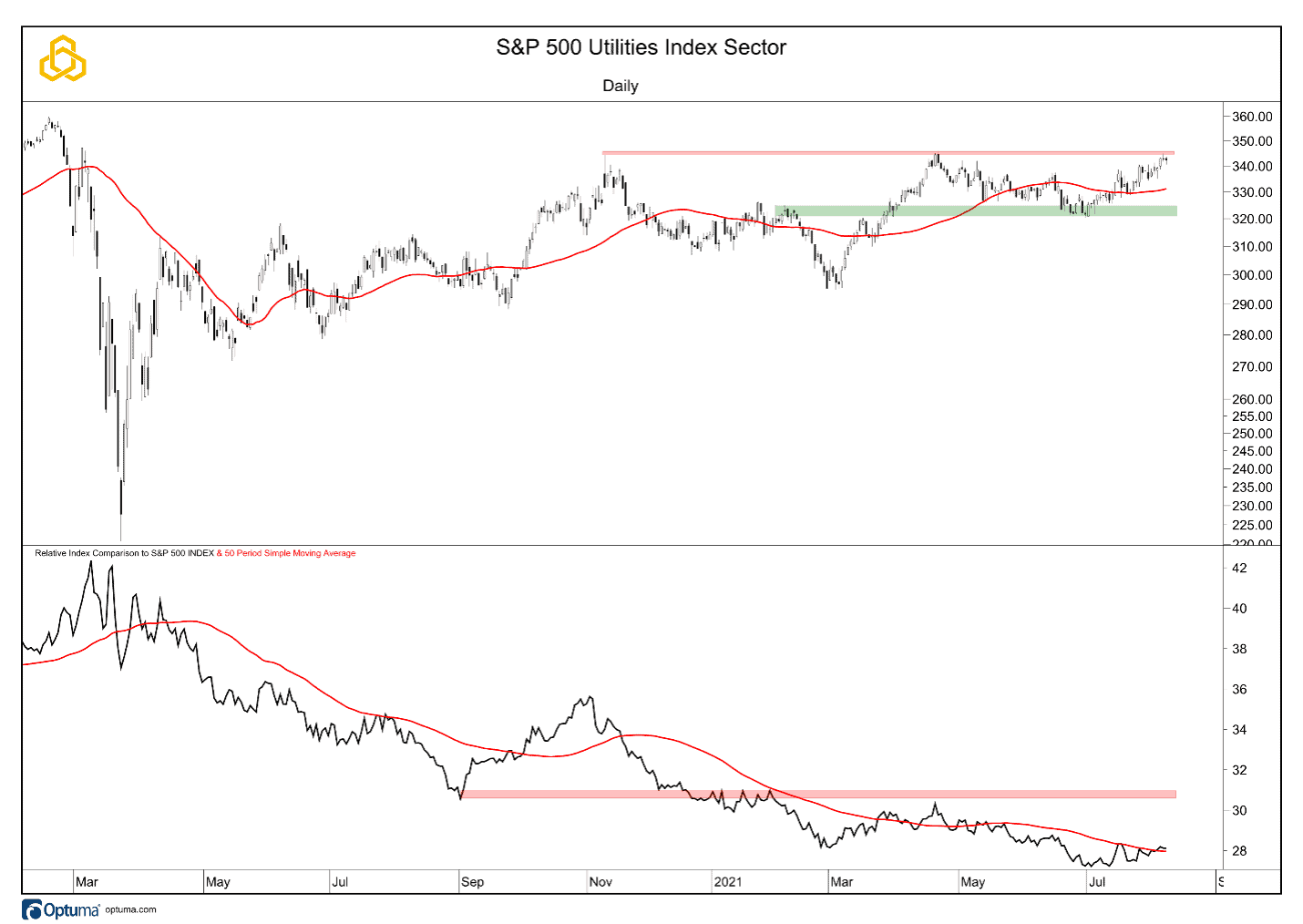
Health Care
The Health Care sector remains in a steady uptrend, above support at the breakout level near 1,460. The rising 50-day moving average, which has been support to pullbacks, continues to move higher and lines up with 1,500 for the index.
Relative to the S&P 500
On a relative basis, the group is above the 50-day moving average, which is beginning to move to the upside. The ratio is also in the early stages of breaking above resistance.
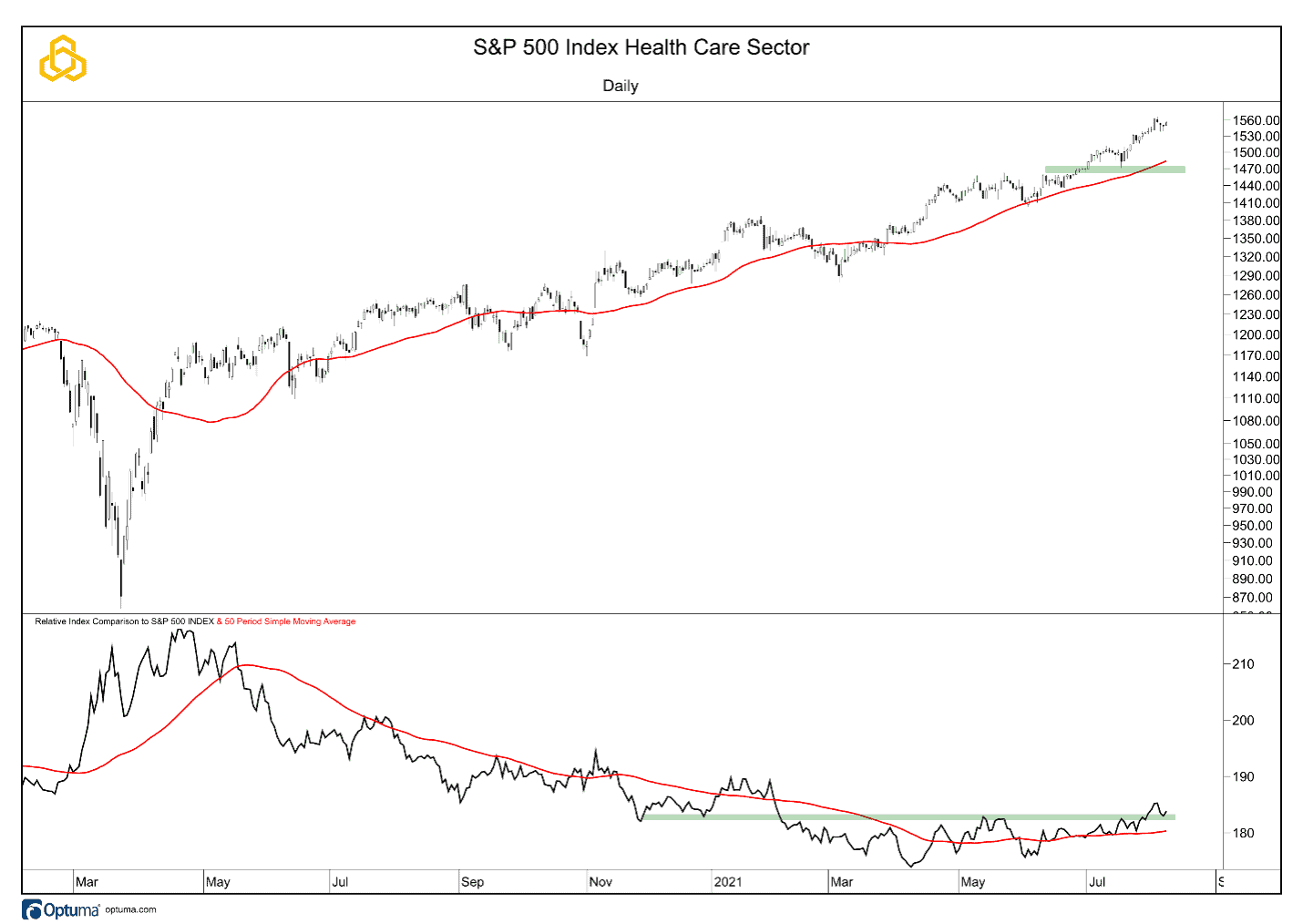
Take-Aways:
The two most interesting developments over the past week are the potential resurgence of strength in Financials and the potential for a breakout in Utilities. Financials are considered an “offensive” sector which generally benefits from higher rates. Utilities are “defensive” and tend to do well when rates are falling. This is the latest example of the churning under the surface of the equity market. Aside from these two groups, the title of the most recent episode of Who Charted? remains appropriate: The Market is Boring.
